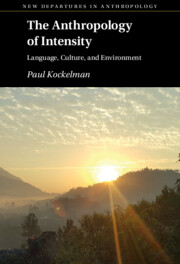Book contents
- The Anthropology of Intensity
- New Departures in Anthropology
- The Anthropology of Intensity
- Copyright page
- Dedication
- Contents
- Figures
- Tables
- Acknowledgments
- Abbreviations
- Introduction: Intensity
- Part I Grounds
- Part II Tensors
- Five Intensifiers
- Six The History of Mas
- Seven The Comparative Complex
- Eight Sentences and their Shadows
- Part III Thresholds
- Conclusion: The Ecological Self
- References
- Index
Seven - The Comparative Complex
from Part II - Tensors
Published online by Cambridge University Press: 05 May 2022
- The Anthropology of Intensity
- New Departures in Anthropology
- The Anthropology of Intensity
- Copyright page
- Dedication
- Contents
- Figures
- Tables
- Acknowledgments
- Abbreviations
- Introduction: Intensity
- Part I Grounds
- Part II Tensors
- Five Intensifiers
- Six The History of Mas
- Seven The Comparative Complex
- Eight Sentences and their Shadows
- Part III Thresholds
- Conclusion: The Ecological Self
- References
- Index
Summary
Chapter 7 is about the colonial comparative construction in Q’eqchi’-Maya. It analyzes the form and function of various tokens of this construction, as found in a colonial grammar. It compares this colonial construction with the modern comparative construction, showing how they differ and elucidating the historical relation that connects them. It shows that both constructions were present in the colonial period, overlapped for some time in their comparative function, and are still in use today. At some point around the middle-to-end of the nineteenth century, the colonial construction gave up its comparative function (retaining its original spatial usage, along with a secondary metaphorical usage), and the modern construction took on its comparative function (while retaining its original spatial usage). It argues that the colonial construction did not evolve into the modern construction. Rather, both constructions are part of a larger comparative complex, involving many variants, that has long been active.
- Type
- Chapter
- Information
- The Anthropology of IntensityLanguage, Culture, and Environment, pp. 176 - 203Publisher: Cambridge University PressPrint publication year: 2022

